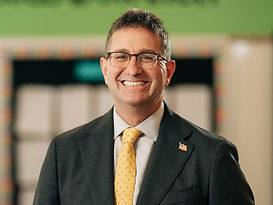GUEST COLUMN.
Crowdfunding to Help Pay for Infrastructure
By John R. Bartle, University of Nebraska at Omaha and Can Chen, Georgia State University

Modern life cannot exist without good infrastructure. Travel, water, toilets, electricity, internet, and heating and cooling for buildings all rely on good infrastructure systems. The wealth of cities depends on public investments in infrastructure. Right now, it might seem as though there is all the money in the world going for these investments. After all, President Biden’s 2021 Infrastructure Bill allowed for the largest investment in public transit in history, the single biggest flow of cash to bridges since the construction of the interstate highway system and huge amounts of dollars flowing toward broadband.
But investments in infrastructure are an ongoing proposition, and these federal dollars are one-time money, and often require local matches as well.
There needs to be a long-term connection between revenues and expenditures and citizens need to be involved in the decision-making of infrastructure investment. Financing approaches that link the benefits from the projects with revenues can provide long-term, stable, sustainable sources of funding that can be a permanent solution to the challenges we have faced in this area.
In our new book, Innovative Infrastructure Financing, we point to several new financial tools and explain where they can best be used to achieve these goals. One such tool is civic crowdfunding. This involves raising money for a project by relying on contributions of small amounts of cash from many people, generally through outreach over the Internet.
While this approach has gained public attention for its utility in personal and social needs, it has also been used with success to fund various small-scale infrastructure projects. Crowdfunding is a decentralized, voluntary way to gauge the demand for a project that can involve both residents and non-residents. Rather than going through the often cumbersome and slow process of public approval, if a project can gain support, the funds can be raised quickly, facilitating fast project completion.
One example of a successful crowdfunding project is the Arapahoe protected bike lane project in Denver. In 2014, the project raised $36,085 from 250 donors, most of whom were within five miles of the project. The Downtown Denver Project (DDP) secured $120,000 from the Gates Family Foundation and the Downtown Denver Business Improvement District (BID), reported Kate Gasparro, a researcher and currently director of land development at Bedrock Detroit. The city pledged to cover $35,000 of the design fees and construction costs if the DDP would raise $35,000.
The DDP engaged interested residents in the design process and re-worked the design to respond to concerns about parking, access routes, and access to fire hydrants, Gasparro found. The project was completed in less than a year. While this project was successful, there were concerns expressed from both residents and members of the BID that public funds should be used instead of soliciting the community.
A similar cycling infrastructure project was successful the previous year in Memphis. There, $75,000 were crowdsourced from individual Memphians to connect a low-income neighborhood to an existing bike network.
Of course, the amounts that can be raised by crowdsourcing will likely be relatively small compared to the overall project expenses. The Memphis bike lane, for example was a $2 million venture overall.
Still, we believe that the advantages of crowdsourcing could make it a relatively common means to get infrastructure projects started, or finished, once the federal dollars stop flowing.
That’s because the strengths of civic crowdfunding include:
The ability to raise funds quickly,
Provision of project enhancements desired by users,
Reduced risk to investors, as funds will be returned if the target amount is not raised, and
Involvement of funders in a decentralized, voluntary way.
The weaknesses include:
The fact that they are unlikely to raise amounts necessary to fully fund large projects,
It requires effort to initiate a funding campaign, and
There’s a risk of damage to reputation if the online platform closes or if funds are not returned.
Projects such as the ones in Denver and Memphis show how civic crowdfunding can provide additional funds from donors who are supportive of a project. At the same time, research has shown that government involvement can enhance public trust in a project. This illustrates how the public and private sectors can leverage each other’s strengths to complete an infrastructure project more quickly than might otherwise be the case.
The contents of this guest column reflect those of the authors, and not necessarily those of Barrett and Greene, Inc.



































































































